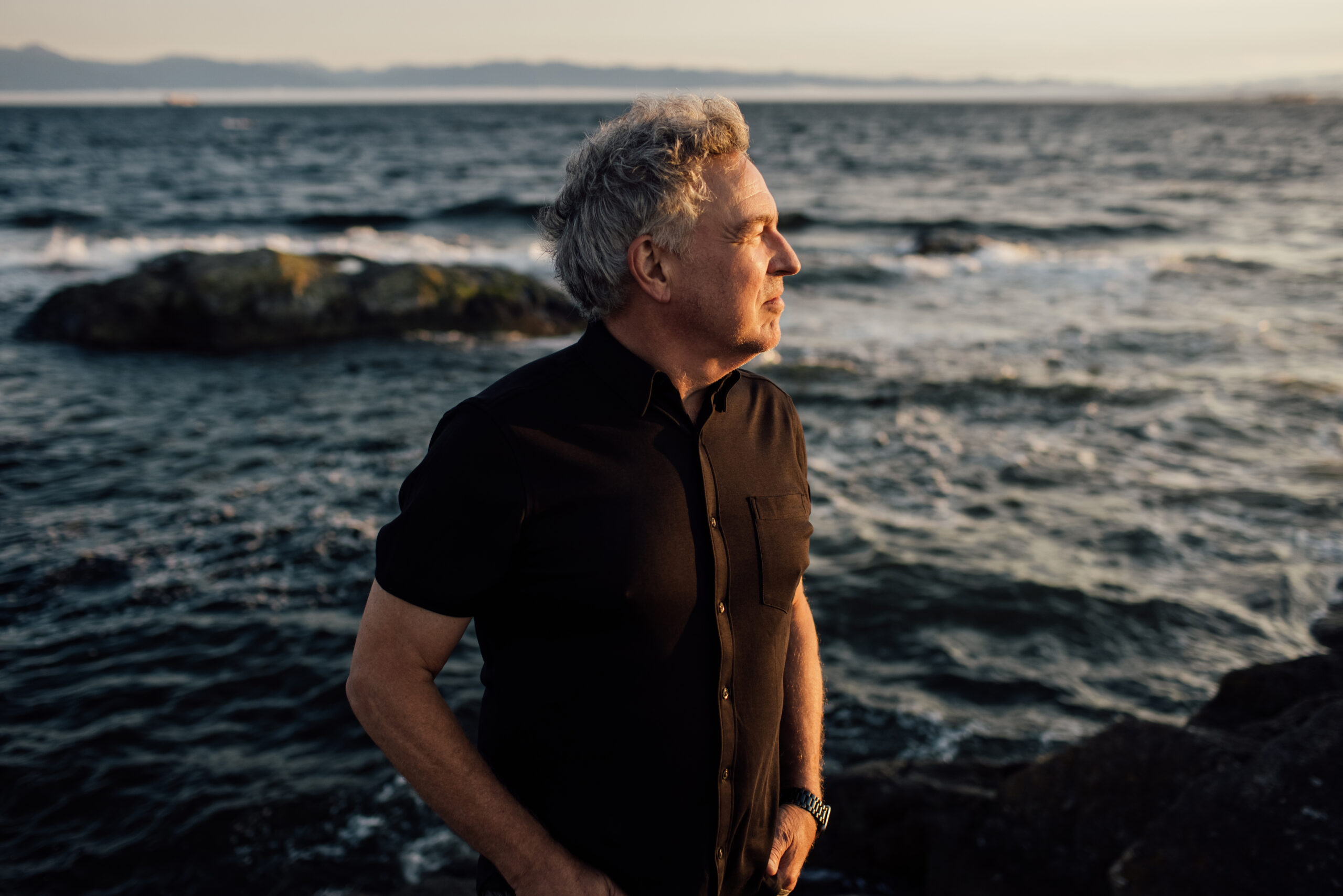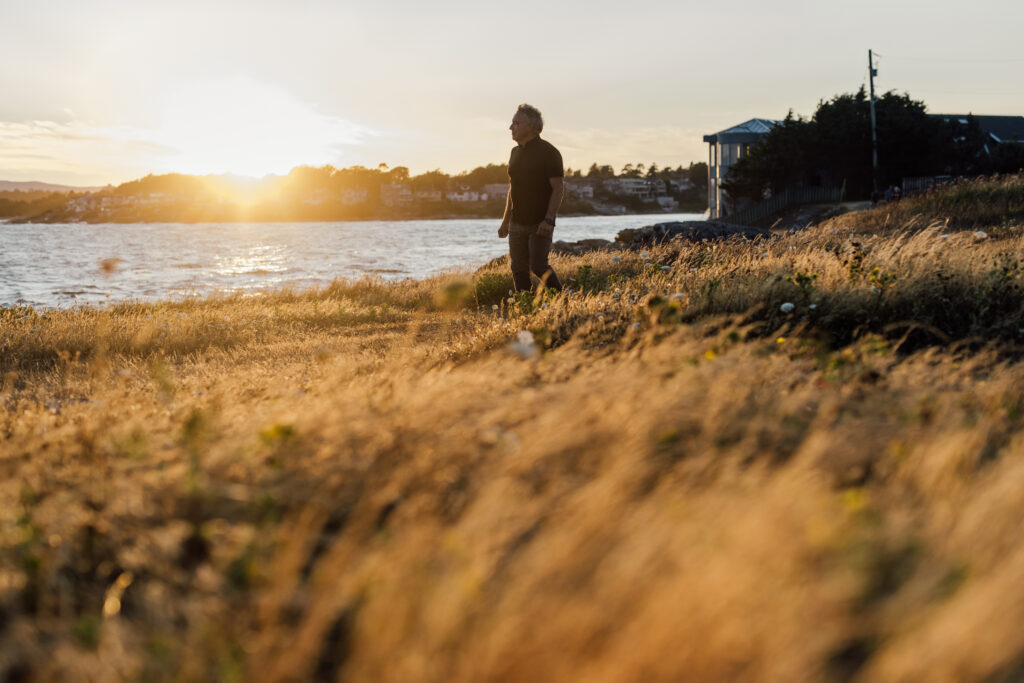
The federal government ‘sees a long-term future for the oilsands.’ Here’s what you need to know
An internal document obtained by The Narwhal shows how the natural resources minister was briefed...
The B.C. Supreme Court’s recent decision not to renew the injunction against blockades at Fairy Creek was undoubtedly a win for the blockaders. In legal terms, however, it wasn’t an environmental victory, but a straightforward repudiation of dirty police tactics. As Justice Douglas Thompson made clear in his decision, old-growth logging remains legal in B.C. with or without an injunction, and obstructing it remains a crime.
In mid-September, while Judge Thompson was hearing the Rainforest Flying Squad’s final arguments in a Nanaimo court room, I was speaking with veteran environmental lawyer Chris Tollefson about the “symbiotic relationship” between civil disobedience and public interest litigation, his lifelong appreciation for the underdog and the elusive legal precedent he’s been trying to establish for years — the one that Fairy Creek failed to secure, but which Tollefson feels is only a matter of time.
In his 32-page decision in which “public interest” makes 30 appearances, Justice Thompson explained: “Although the authorities direct me to consider the ‘public interest,’ the scope for doing so is not so wide that I may ignore fundamental constitutional principles.” The most sacred of those principles, Thompson insisted, is for “legislatures and governments to legislate and govern, not the courts.” Thompson was saying that it’s not for him or any other judge to question the law itself, let alone remake it; the court can only weigh its application. In that light, Thompson’s apparently sincere belief “that the protesters are moral and ethical citizens endeavouring to ward off impending destruction of a rare and irreplaceable ecosystem in the context of an existential environmental and climatological crisis” is legally irrelevant. Judges don’t get to rewrite the Forest Practices Code. They can reprimand the RCMP for sullying the reputation of the entire executive branch, but ultimately “the protesters’ real complaint is with the policy of the government of British Columbia.”
This has been the default legal position of the court in just about every instance of environmental litigation in Canadian history. But the blockaders at Fairy Creek aren’t the only ones who regard that as far too narrow a view of both the public interest and judicial jurisdiction. Environmental lawyers have for decades been urging courts to reconsider what constitutes the public interest, and who gets to define it.
Tollefson is a pioneer of that struggle. The 61-year-old is the executive director of the Pacific Centre for Environmental Law and Litigation, founding director of the University of Victoria’s Environmental Law Centre, former president of Ecojustice Canada and principal at Tollefson Law. Over the course of his career, Tollefson has argued or advised on almost every major environmental case to come before the courts in western Canada, from Clayoquot Sound and Enbridge Northern Gateway to the Trans Mountain pipeline and Teck’s Frontier oilsands mine. In the early 1990s, after watching various deep-pocketed developers and resource companies drag environmental protesters through court on spurious — but expensive — anti-libel charges, Tollefson drafted Canada’s earliest version of anti-SLAPP (Strategic Lawsuits Against Public Participation) legislation; in 2019, B.C.’s Attorney General finally signed it into law. Tollefson knows how to play the long game.

“In its pure form, when you engage in civil disobedience, you are submitting to the rule of law,” Tollefson tells me. “You are accepting that we live in a society governed by law, and you accept the punishment for breaking the law, and you hope through that effort, through that gesture, that the law will change.”
Tollefson’s first experience with this paradox came in 1993, two years into his law professorship at the University of Victoria, when his students started heading up to Clayoquot Sound to protest old-growth logging, risking arrest in the process. He began speaking at the rallies being held every weekend in Victoria — “my first introduction to being a public explainer” — where he talked about the laws that define injunctions and criminal contempt. “People are put in a position in those blockades of having to make some important legal decisions in a split second,” he says. “And I think it’s important for them before they make those decisions to know as much about the context that they’re in as they possibly can.” When he founded the university’s Environmental Law Centre two years later, one of his first projects was to publish a handbook on civil disobedience.
Today, Tollefson describes civil disobedience as “a symptom of democratic failure. People really believe there is an injustice, and they’ve tried everything at their disposal to change the unjust law or the injustice generally, and they’re left with no choice. So if we see episodes like Clayoquot or Fairy Creek, we have to ask: what does that say about our democratic system?”
One remedy to that democratic failure is public interest litigation, a relatively recent field of law in Canada that has been around since the 1960s but didn’t have any teeth until the Charter of Rights And Freedoms came into force in 1982. Defending the public interest is fundamentally different from most civil litigation, which typically revolves around disputes between two or more private interests (you fired me unjustly). In Tollefson’s line of work, “a collision between two visions of the public interest” is at play, with the state on one side of the courtroom and a collection of individuals who argue that the state has failed to uphold their interest on the other.
“Governments tend to believe that they have a monopoly of legal power and political authority to define the public interest,” Tollefson says. “And courts will tend to align with the idea that it is government’s exclusive job to define the public interest. So when you’re a public interest litigator, you’re facing an uphill battle because you’re arguing that your client or your cause represents an interest different than that which has been defined by the government. And what you have to try to do is persuade the courts to at least hear you out.”
That’s precisely what Justice Thompson refused to do with respect to the ecological imperatives that formed one of the Fairy Creek blockaders’ line of defence: “To take account of this type of public interest would amount to contempt of constitutional constraints on judicial powers,” Thompson wrote. “Such considerations are not on the table.”
But in Tollefson’s view, and that of many like him, the constraints aren’t constitutional at all; they’re a product of legal tradition that is subject to discretion, one that (Thompson’s decision notwithstanding) is gradually starting to shift.
“I think especially post-charter, the courts recognize that they can’t slam the door whenever that argument is raised,” Tollefson says. “Because it could be that the government’s wrong; it could be that charter rights have in fact been violated.”
That sounded exactly like the rhetoric emanating from another prominent cause drawing thousands of protesters into streets across Canada, a cause that seemed to be climaxing while we spoke: the anti-vaccine mandate crowd.
“That’s the dilemma,” Tollefson says. “If you concede the idea that the government doesn’t have a monopoly on determining the public interest, then you do have to hear people out. How long you listen to them before you decide their case is without merit, that’s another thing.”

Tollefson has represented clients in two recent, nationally significant resource-extraction cases where he has argued the public interest should be reframed in the context of the climate emergency. The first was Petronas’s $36 billion Pacific Northwest LNG pipeline, which would have sent 12 megatonnes of liquefied natural gas per year from northeast B.C. to a terminal just outside Prince Rupert. The second was Teck’s $20 billion Frontier Mine, which would have been the largest bitumen mine in Alberta’s oilsands. In both instances, the proponent cancelled the project at the 11th hour, before final approval could come in. The result was a bittersweet victory for Tollefson that today’s Fairy Creek blockaders might identify with: a win that fails to set a precedent.
“[Petronas] was one of the first projects where climate impacts were quantified and addressed in a very specific way,” Tollefson says. “We were able to say, if this project goes ahead, it would represent up to 11 per cent of Canada’s all-time carbon budget.” As with Teck’s Frontier mine a few years later, that argument didn’t stop the projects from passing their environmental assessments — but that wasn’t what Tollefson was hoping for. The point was to “create a very good evidentiary record” so that after the projects were inevitably approved, a judicial review could be filed. “If you put on the record the right arguments and the right evidence and they ignore it, then you have the makings of a judicial review. So that hard work in the regulatory process of laying out the arguments and the evidence, often they’ll misunderstand or misconstrue or not even consider it, and if they do that then they’re exposed to being overturned.”
That’s precisely how Northern Gateway was overturned, and how Trans Mountain was halted for two years after its initial approval, although in both cases it was Aboriginal Rights under Section 35 (rather than strictly environmental considerations) that won the day.
As for Pacific Northwest LNG, “the government and Petronas strongly objected to us introducing that [climate] evidence, so we went to federal court to argue about its admissibility. I think the hearing went very well, but we’ll never know whether we would have won that argument because while the judge was considering his decision, Petronas withdrew its proposal and the case was withdrawn.”
His clients’ challenges to the Petronas and Teck projects on climate grounds “were the first two cases to argue for the admissibility of carbon budget evidence that I’m aware of,” Tollefson says. “I think carbon budgets are an incredibly powerful way to quantify the very tough choices that we face and the limited room to move that we have.” Tollefson believes that in both cases “that evidence was just so explosive in terms of the public debate that that’s another reason they didn’t want it in there.”

Engaging the public has remained a key part of Tollefson’s approach to environmental litigation ever since he cut his teeth at Clayoquot Sound. Speaking to him, I was struck by the parallels with the scientific community, which has become increasingly engaged in public dialogue over recent years. Like climate scientist Katharine Hayhoe, or energy economist Mark Jaccard or the many doctors working to inform the public about COVID-19 and vaccines, Tollefson sees public outreach and advocacy as part of the job.
“It used to be that a lawyer’s main job was to make arguments in the courtroom and give no comment otherwise, except maybe when they win. I’ve always believed that’s far too narrow a vision of the role of lawyers or law professors. We need to put ourselves out there. We almost have a duty to explain things to the public.” In his view, “that includes helping journalists when they’re trying to grapple with hugely important and complicated decisions.”
Tollefson was careful to emphasize that this “isn’t about influencing the judge, at all. What you’re trying to do is use the case as a way of changing public attitudes, which may or may not affect your case but could have positive benefits down the road.” A part of me thought, of course he would say that; a close read of Judge Thompson’s Fairy Creek decision left me with the strong impression that he had noticed the media’s relentless exposure of RCMP officers’ various abuses of authority, from snapping off blockaders’ masks to prominent displays of the ‘thin blue line’ badges. Lawyers for the blockaders may not have instigated any of those press reports, but Tollefson does recall a case in which he represented two kindergarten teachers, Lis Stannus and Emily Towes, fighting an expansion of RioTinto’s aluminum smelter in Kitimat. It was an obscure case, unknown even to most residents of Kitimat, until the story found its way into the hands of a tenacious reporter (one of The Narwhal’s founders, Carol Linnitt,) who covered the story relentlessly. That exposure “validated to Lis and Emily, our clients, that this was important. I think as well, it provided a level of scrutiny to the lawyers on the other side — they knew arguments they were making would get reported on and be assessed in the court of public opinion.” The case ended neither in outright victory nor defeat — RioTinto didn’t end up installing the sulfate scrubbers Tollefson’s clients had sought, but “much better public information was required to be gathered, and a transparent committee was set up to monitor and provide information to the ministry on compliance issues. I think what was transformed was the relationship between the government, the company and that community. It’s not a legal precedent, but it’s a precedent.”



Of course legal precedents remain the ultimate prize, and Tollefson remains in close pursuit of an environmental lawyer’s holy grail: a decision that forces government to consider the climate impacts of every project that comes under review. In La Rose et al v. Her Majesty The Queen, Tollefson is part of the legal team representing 15 young Canadians suing the federal government for failing to take meaningful action on climate change, which — they argue — amounts to a violation of their right to life, liberty and security of the person under Section 7 of the charter.
The case was struck down by a federal court in October of 2020, on the grounds that defining meaningful climate action is too nebulous and inherently political for a court to take on — in legalese, the court says climate policy just isn’t “justiciable.” But similar cases have scored recent successes in a handful of European nations, giving Tollefson and his clients cause for hope as they await a Federal Court of Appeal hearing; he expects it will be granted sometime in spring of 2022.
“The doors have opened to public litigants,” Tollefson says, “but increasingly, especially in climate litigation, we’re seeing a new barrier present itself, and that’s this idea of justiciability. I think one of the very significant things about La Rose, which is something that courts in other jurisdictions are also grappling with, is that we need to revisit our ideas about justiciability in a climate emergency. It’s not appropriate for the courts to step aside on the basis that it’s too political or too complicated. It is their job, at this moment, to offer supervision to what governments are failing to do. They are the last backstop.”
As ever in these cases, the road is long, and so are the odds of success. A clear win seems all but impossible — in the case of climate policy, no one even knows what it would look like. But as the Fairy Creek blockaders just learned, and as Tollefson reminds me: “Victory comes in a lot of different forms.”
Updated Oct. 8, 2021, at 12:28 p.m. PT: An earlier version of this story incorrectly said a case Chris Tollefson argued against Teck Resources’ Frontier Mine went to judicial review.
Get the inside scoop on The Narwhal’s environment and climate reporting by signing up for our free newsletter. On March 17, federal Conservative Leader Pierre Poilievre...
Continue reading
An internal document obtained by The Narwhal shows how the natural resources minister was briefed...

Notes made by regulator officers during thousands of inspections that were marked in compliance with...

Racing against time, dwindling habitat and warming waters, scientists are trying to give this little-known...
